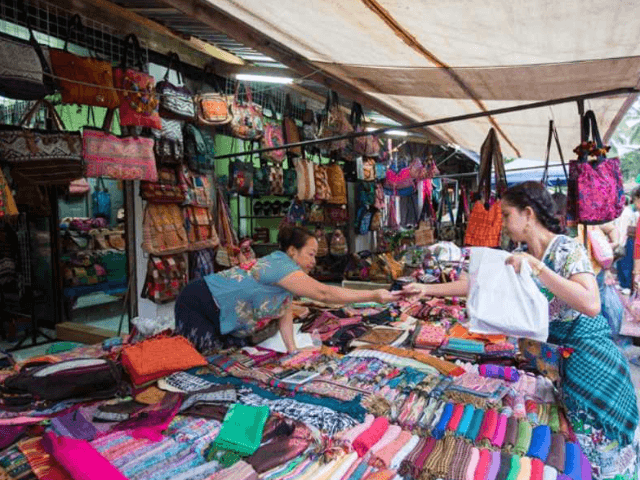Perfume Pagoda not only attracts Vietnamese each time they go on pilgrimage but also surprises foreigners when they set their first footprint here. Let’s discover why this pagoda impresses millions of travelers and how to have the most interesting ex
TABLE OF CONTENTS
1
Introduction to the Perfume Pagoda
What Is the Perfume Pagoda?
The Spiritual Significance of This Iconic Landmark
Why It’s a Must-Visit Spot in Hanoi
2
History and Cultural Importance of Perfume Pagoda
Origins of the Pagoda Complex
Annual Festivals and Their Significance
Stories and Legends Behind the Pagoda
3
How to Get to Perfume Pagoda from Hanoi
Transportation Options: Bus, Private Car, and Tours
Estimated Travel Times and Costs
Tips for Planning a Seamless Journey
4
Best Time to Visit the Perfume Pagoda
Peak Season: The Perfume Pagoda Festival (February to March)
Off-Season: A Tranquil Experience Without the Crowds
Weather Tips for a Comfortable Visit
5
What to See and Do at the Perfume Pagoda
Exploring the Pagoda Complex: Key Temples and Caves
The Scenic Boat Ride Along the Yen Stream
Trekking to Huong Tich Cave: A Journey Worth Taking
6
Tips for a Memorable Perfume Pagoda Visit
What to Wear and Bring for the Trip
Navigating Crowds During Festival Season
How to Respect Local Customs and Traditions
7
Nearby Attractions to Explore
Tam Coc and Its Stunning Limestone Scenery
Hanoi Old Quarter: A Cultural Experience
Hoan Kiem Lake: A Relaxing Stop Before or After Your Trip
8
FAQs About the Perfume Pagoda
Is the Perfume Pagoda Suitable for Kids and Elderly Travelers?
What Are the Entry Fees and Other Costs?
Are Guided Tours Recommended for First-Time Visitors?
9
Conclusion – A Spiritual and Scenic Journey to Perfume Pagoda
Key Takeaways for an Enriching Visit
Why the Perfume Pagoda Should Be on Your Vietnam Itinerary
Final Tips to Make the Most of Your Experience
Introduction to the Perfume Pagoda
What Is the Perfume Pagoda?
The Perfume Pagoda (Chùa Hương) is a complex of Buddhist temples and shrines built into the limestone mountains of Huong Tich, about 60 kilometers from Hanoi. Visitors often enjoy a scenic boat ride along the Yen Stream before trekking or taking a cable car to the main cave temple.
The Spiritual Significance of This Iconic Landmark
An important pilgrimage site, the Perfume Pagoda draws thousands during its annual festival (January–March, lunar calendar). Pilgrims come to pray for health and prosperity, with the "Cave of the Perfumed Traces" offering a peaceful and sacred ambiance.
Why It’s a Must-Visit Spot in Hanoi
- Scenic Landscapes: Stunning rivers, forests, and mountains surround the site.
- Cultural Insight: Experience Vietnamese traditions and spiritual practices.
- Adventure: Choose between trekking or a cable car ride to the temple.
- Memorable Atmosphere: Peaceful chants and breathtaking views make it unforgettable.
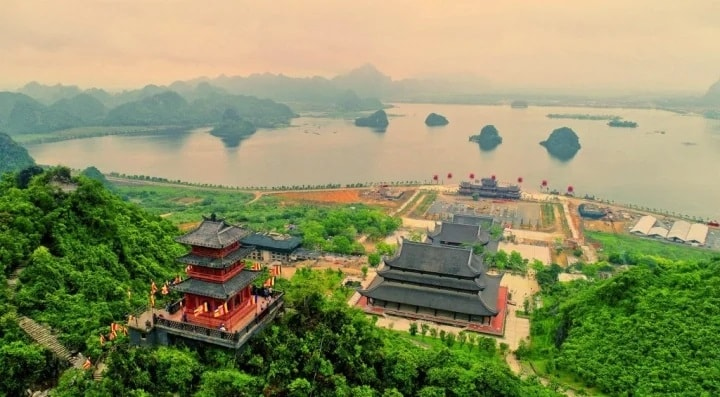
History and Cultural Importance of Perfume Pagoda
Origins of the Pagoda Complex
While the exact origins are debated, it's believed that the first temples were built here as early as the 15th century. Legend has it that a monk meditated in a cave in the area and discovered its spiritual power, leading to the construction of a small shrine. Over time, more temples and pagodas were added, creating the vast complex we see today. The main cave, Huong Tich Cave, is considered the heart of the pilgrimage site.
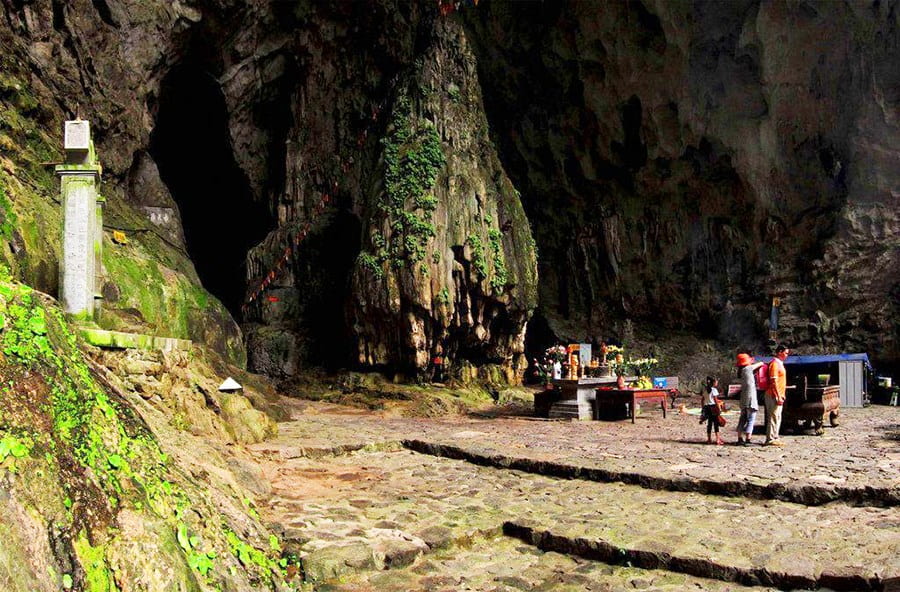
Annual Festivals and Their Significance
The Perfume Pagoda Festival, which typically starts after the Lunar New Year (usually from January to March), is the most important event. Thousands of pilgrims and tourists flock to the site during this time. The festival is a celebration of Buddhism and Vietnamese culture, featuring religious ceremonies, folk performances, and local market activities. People come to pray for good fortune, health, and prosperity. It's a vibrant and lively time to visit, but be prepared for large crowds.
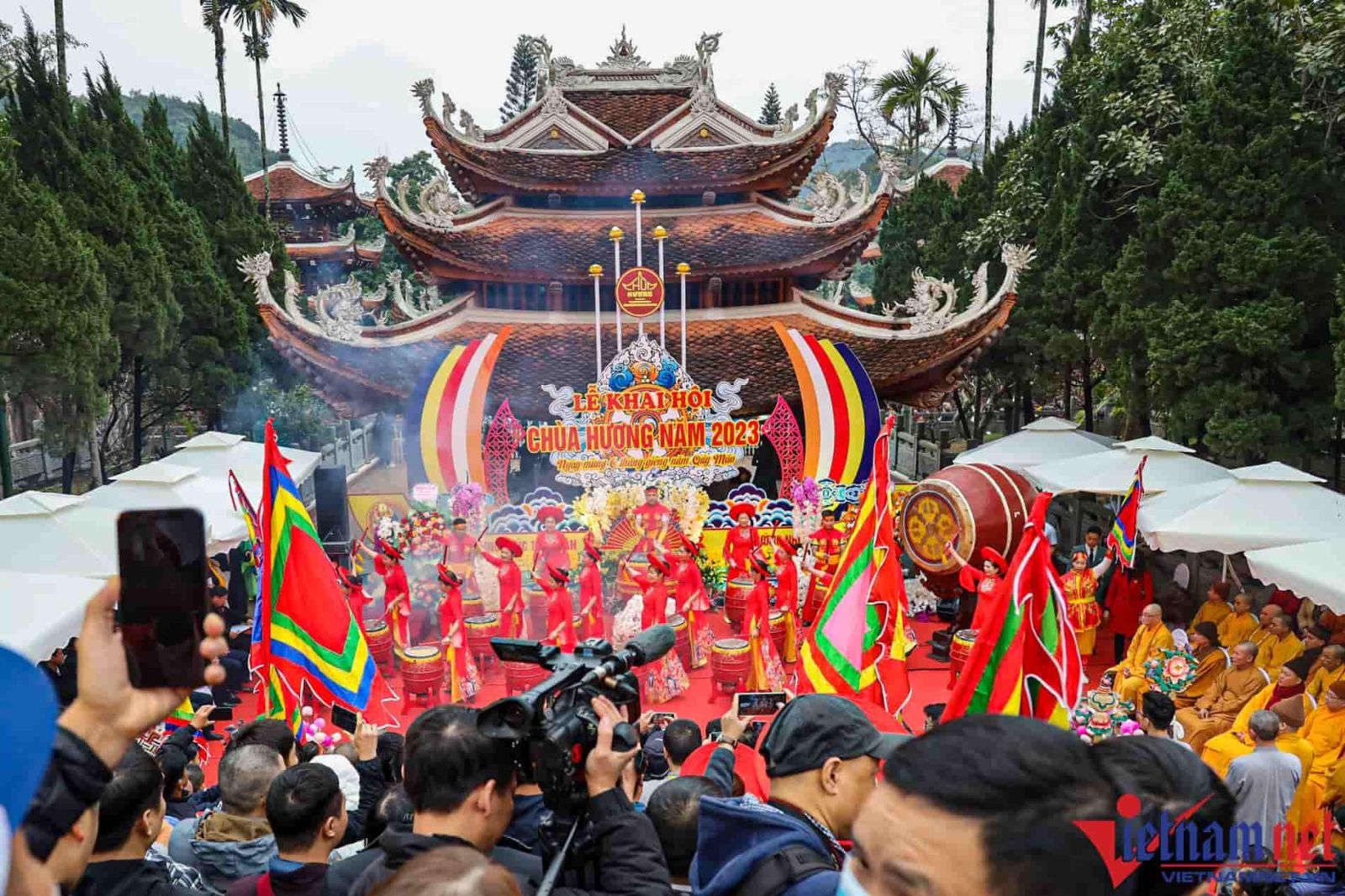
Stories and Legends Behind the Pagoda
Many myths and legends surround the Perfume Pagoda. One of the most popular stories is about the Bodhisattva Avalokitesvara (Quan Am in Vietnamese), who is said to have attained enlightenment in the Huong Tich Cave. Another legend tells of a princess who renounced her royal life to become a Buddhist nun and practiced meditation in the mountains. These stories add a layer of mystique and spiritual significance to the site, drawing pilgrims and visitors seeking blessings and inspiration. They are passed down through generations, enriching the cultural fabric of the Perfume Pagoda.
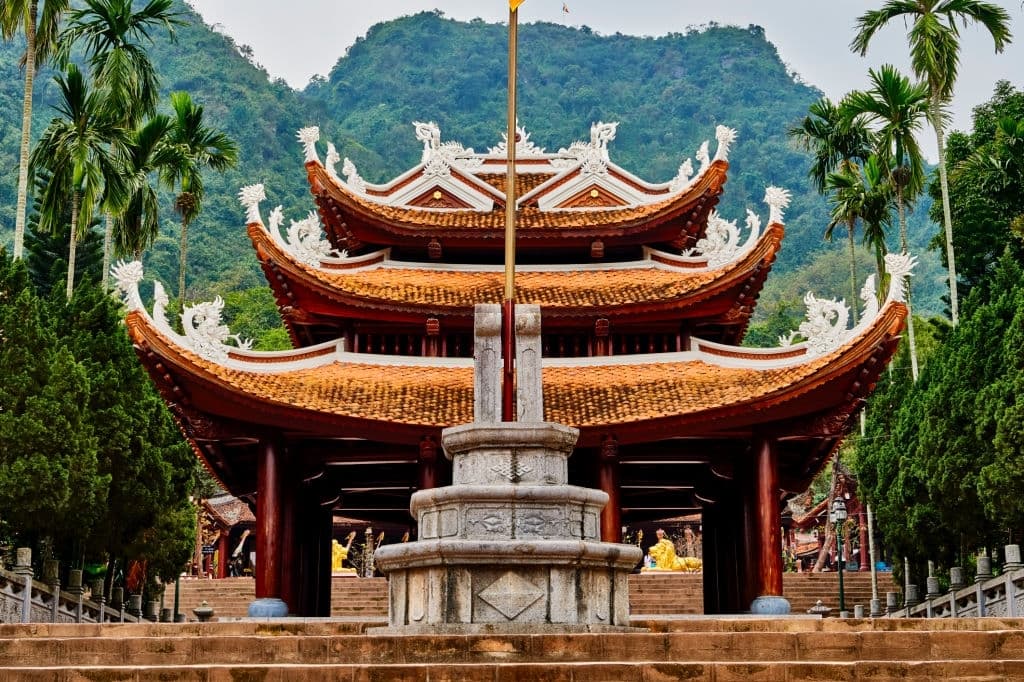
How to Get to Perfume Pagoda from Hanoi
Transportation Options: Bus, Private Car, and Tours
- Public Bus: Budget-friendly, departs from My Dinh Bus Station to Tế Tiêu town. Then take a motorbike taxi or local bus to Duc Khe wharf, followed by a boat to the pagoda. Adventurous but time-consuming with multiple transfers.
- Private Car/Taxi: Comfortable and flexible, arranged via hotels or agencies. Direct to Duc Khe wharf. Good for groups, but more expensive.
- Organized Tours: Convenient, includes transportation (bus/minivan), guide, fees, and sometimes lunch. Hassle-free and informative.
Estimated Travel Times and Costs
- Public Bus: 4-5 hours each way (2-3h bus, ~1h boat, transfers). Cheapest option.
- Private Car/Taxi: ~3 hours each way (2h car, ~1h boat). Faster but more expensive.
- Organized Tours: 8-10 hour day trips. Cost varies, mid-range between bus and car.
Tips for Planning a Seamless Journey
- Visit off-season (outside the festival) for fewer crowds.
- Book tours/transport in advance, especially during peak season.
- Bring water and snacks (especially if traveling independently).
- Be prepared to bargain (motorbike taxis, souvenirs).
- Dress modestly and respect local customs.
- Check the weather (affects boat travel).
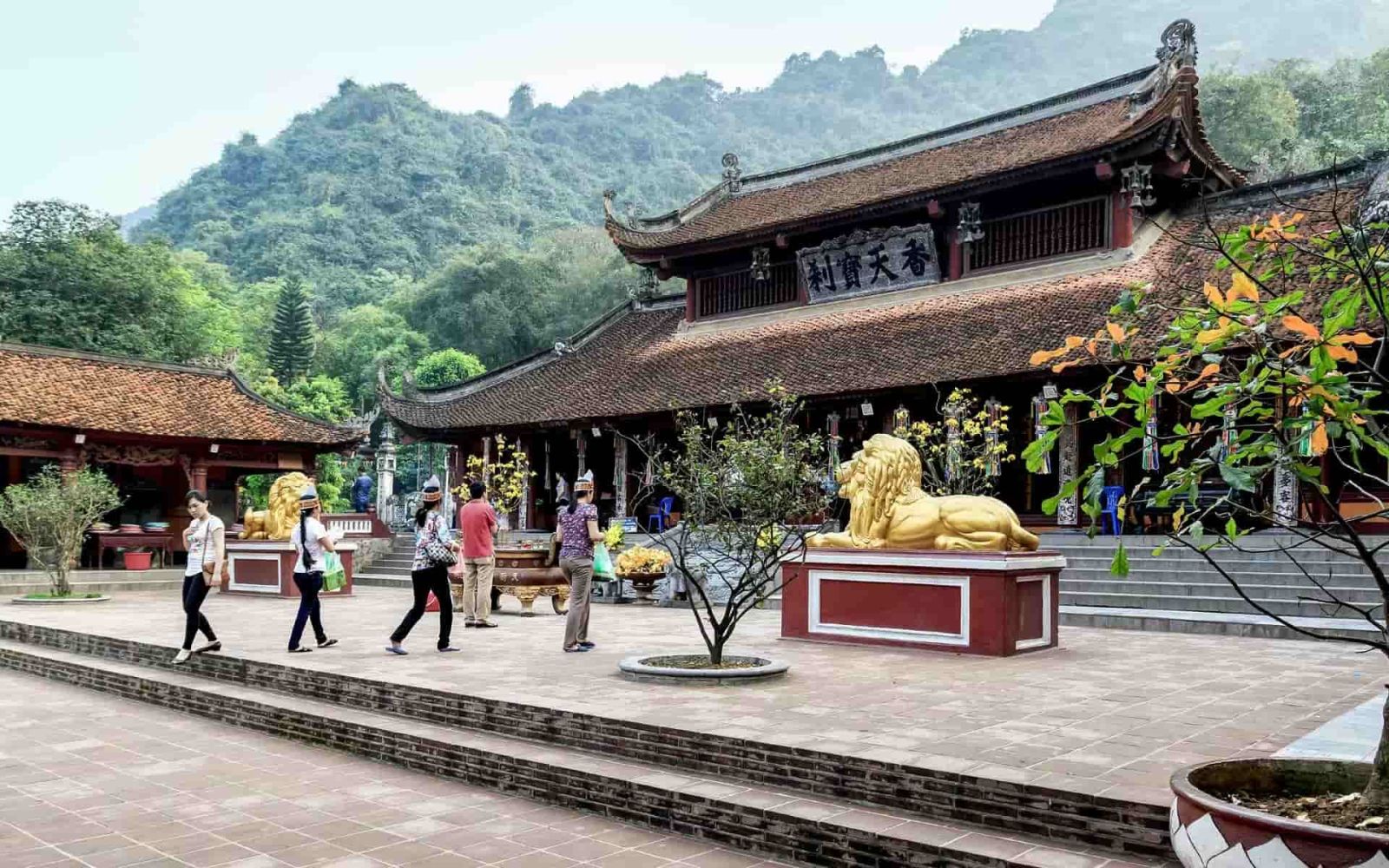
Best Time to Visit the Perfume Pagoda
Peak Season: The Perfume Pagoda Festival (February to March)
The festival (February-March, after the Lunar New Year) is vibrant with pilgrims, performances, and a lively atmosphere. Expect large crowds, higher prices, and potential booking difficulties. Ideal for experiencing peak local culture, but prepare for crowds.
Off-Season: A Tranquil Experience Without the Crowds
Visiting outside the festival offers a peaceful and serene experience. Avoid crowds and better appreciate the natural beauty and spiritual atmosphere. Lower prices are also possible. Ideal for a contemplative visit.
Weather Tips for a Comfortable Visit
Hanoi has four distinct seasons, affecting Perfume Pagoda:
- Spring (March-May): Pleasant, slightly rainy, overlaps with the end of the festival.
- Summer (June-August): Hot, humid, and rainy. Least ideal.
- Autumn (September-November): Mild, dry, and sunny. Best time to visit.
- Winter (December-February): Cool and dry, can be foggy and chilly. Early winter is generally better.Autumn (September-November) and early spring (avoiding peak festival crowds) offer the best weather. Visit during February-March for the festival, but expect crowds.
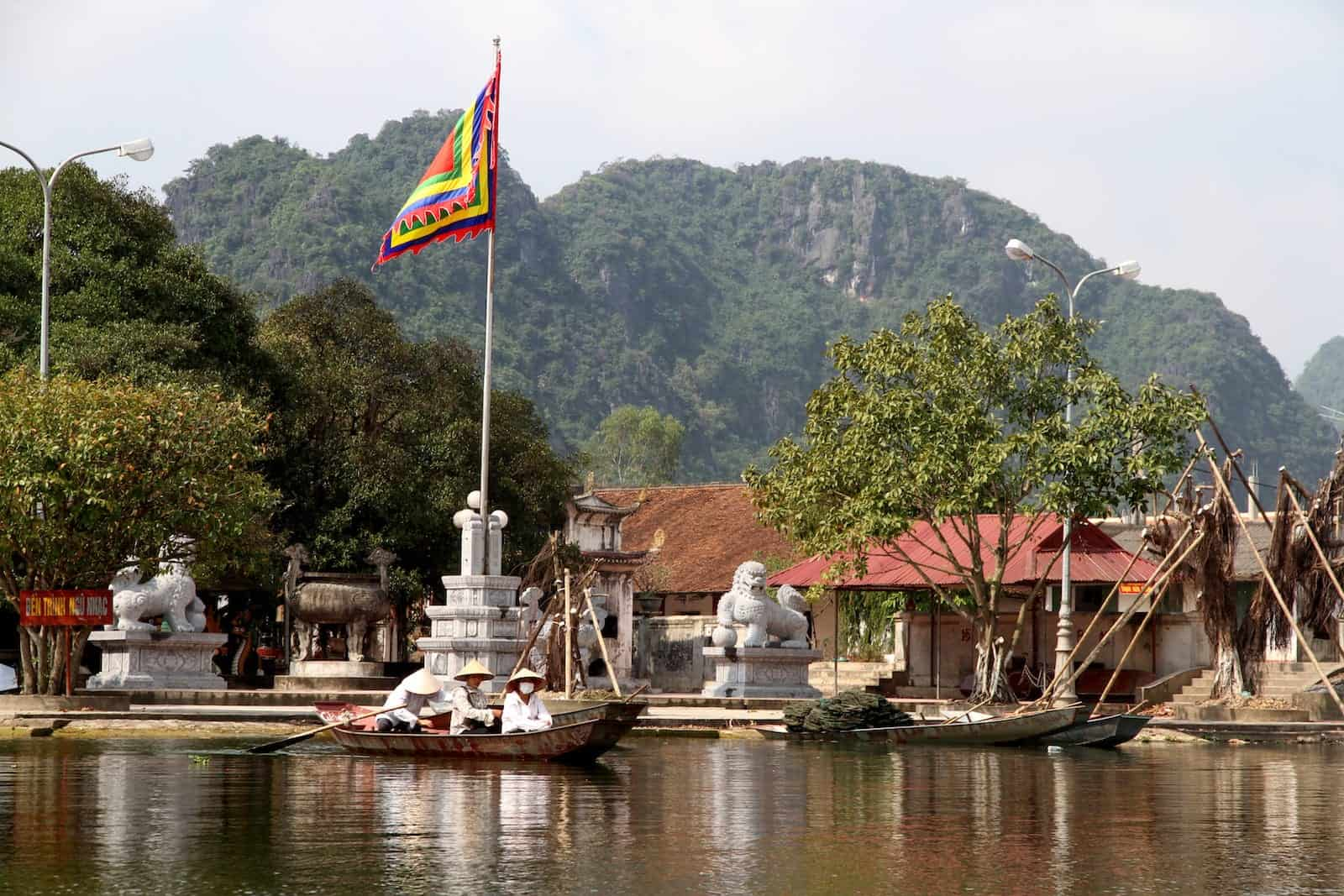
What to See and Do at the Perfume Pagoda
Exploring the Pagoda Complex: Key Temples and Caves
The Perfume Pagoda is a vast complex of temples and shrines spread across the limestone mountains. Highlights include:
- Thien Tru Pagoda: Known as the "Pagoda Leading to Heaven," this site is rich in intricate architecture and spiritual charm.
- Huong Tich Cave: The main attraction, this sacred cave features stalactites and stalagmites, believed to bring blessings of prosperity and fertility.
- Giai Oan Pagoda: A tranquil spot where visitors can learn about its historical ties to the 15th-century legend of Princess Dieu Thien.
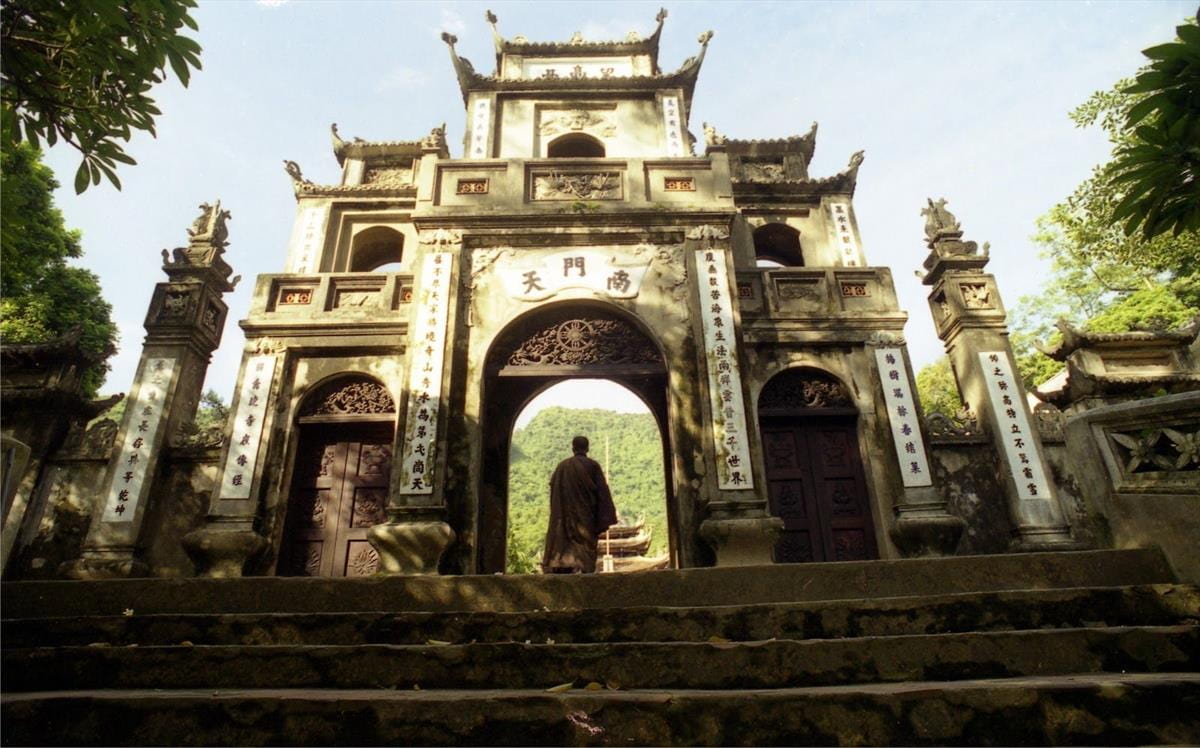
The Scenic Boat Ride Along the Yen Stream
Start your journey with a peaceful 1–2 hour boat ride along the Yen Stream. The calm waters, framed by lush mountains and rice paddies, create an enchanting atmosphere. This leisurely ride offers stunning views and a chance to soak in the natural beauty of the area.
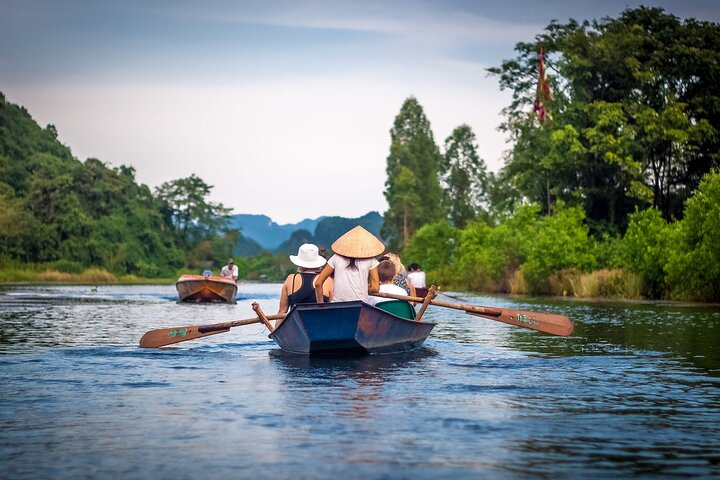
Trekking to Huong Tich Cave: A Journey Worth Taking
Reaching Huong Tich Cave is an adventure in itself. You can either trek through picturesque trails or opt for the convenient cable car. The trek takes about an hour and offers captivating views of the surrounding forests and valleys. Once inside the cave, you’ll be greeted by ancient Buddhist statues and naturally shaped formations, each with its own spiritual meaning.
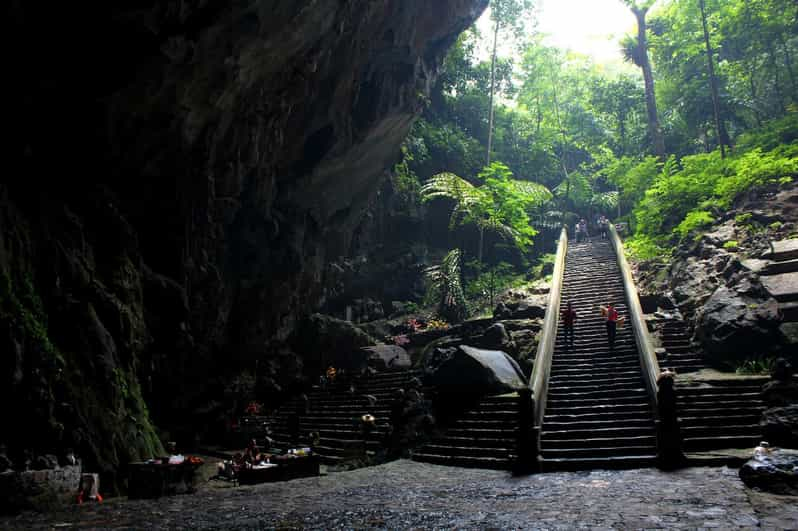
Tips for a Memorable Perfume Pagoda Visit
What to Wear and Bring for the Trip
- Comfortable Shoes: Essential for walking and climbing stairs/steps.
- Modest Clothing: Dress respectfully, covering shoulders and knees, especially when entering temples.
- Rain Gear (if needed): Check the forecast and pack a light raincoat or umbrella, especially during spring and summer.
- Sun Protection: Sunscreen, hat, and sunglasses are recommended, especially during sunny days.
- Water and Snacks: Stay hydrated and energized, especially during longer visits.
- Small Backpack: For carrying essentials.
- Cash: Many local vendors may not accept cards.
- Insect Repellent: Especially during the warmer months.
Navigating Crowds During Festival Season
- Go Early or Late: Arrive early in the morning or later in the afternoon to avoid the biggest crowds.
- Be Patient: Expect queues for boats and at popular sites.
- Stay Hydrated: The crowds and weather can be tiring, so drink plenty of water.
- Keep Valuables Secure: Be mindful of your belongings in crowded areas.
- Consider a Weekday Visit: If possible, visiting on a weekday might be slightly less crowded than on weekends.
How to Respect Local Customs and Traditions
- Dress Respectfully: As mentioned, cover shoulders and knees when entering temples.
- Avoid Loud Noises and Disruptive Behavior: Maintain a respectful and quiet demeanor within temple grounds.
- Do Not Point at Statues or Monks: This is considered disrespectful.
- Ask for Permission Before Taking Photos of People: Be respectful of people's privacy.
- Be Mindful of Monks: If you see monks, avoid touching them or their robes without permission.
- Accept Offerings with Both Hands: If offered something, accept it with both hands as a sign of respect.
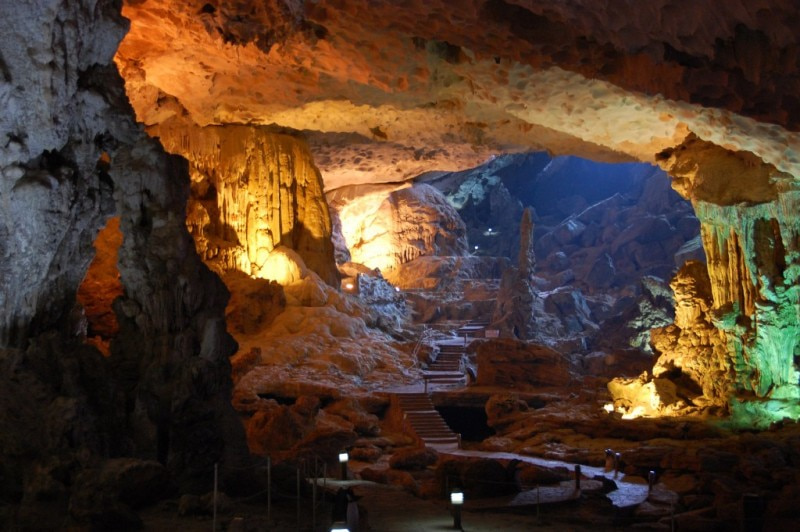
Nearby Attractions to Explore
Tam Coc and Its Stunning Limestone Scenery
Located in Ninh Binh, Tam Coc is often called “Halong Bay on land.” This UNESCO-recognized destination features breathtaking limestone karsts rising from serene rice paddies and winding rivers. Visitors can enjoy a peaceful boat ride through caves like Hang Ca and Hang Hai, surrounded by spectacular natural beauty.
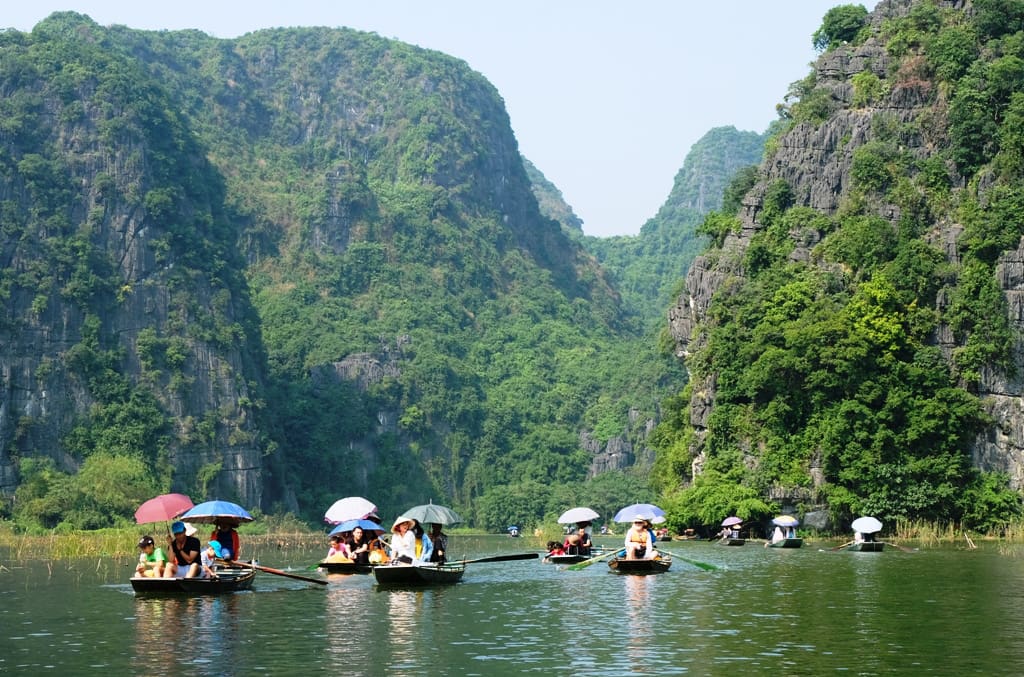
Hanoi Old Quarter: A Cultural Experience
Just a short drive from the Perfume Pagoda, Hanoi’s Old Quarter offers a vibrant blend of history, culture, and modern life. Wander through narrow streets, savor authentic street food like pho and banh mi, and shop for unique souvenirs at bustling markets. Don’t miss iconic spots like Dong Xuan Market and St. Joseph’s Cathedral.
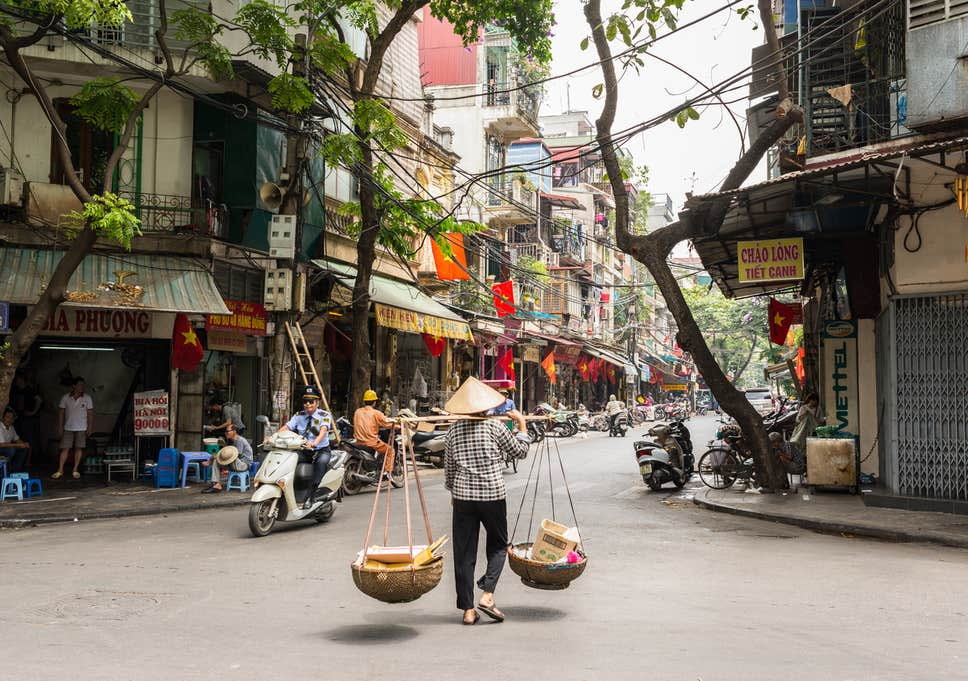
Hoan Kiem Lake: A Relaxing Stop Before or After Your Trip
Located in the heart of Hanoi, Hoan Kiem Lake is a tranquil oasis amidst the city’s energy. Stroll along its shaded paths, visit the iconic Ngoc Son Temple on Jade Island, or simply relax and enjoy the peaceful scenery. It’s an ideal spot to unwind before or after your Perfume Pagoda adventure.
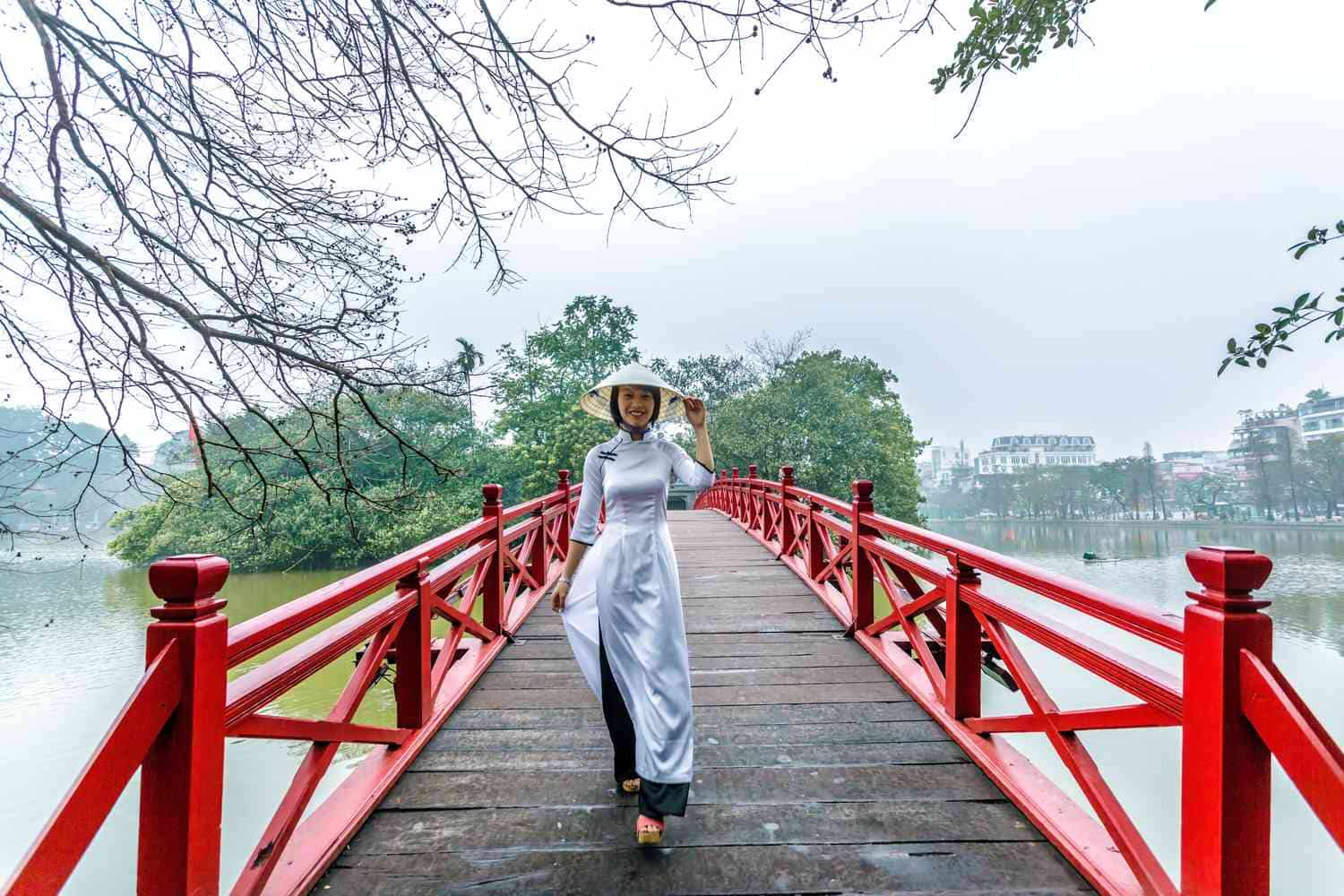
FAQs About the Perfume Pagoda
Is the Perfume Pagoda Suitable for Kids and Elderly Travelers?
Yes, it’s suitable for all ages. While the trek to Huong Tich Cave can be tough, the cable car makes it easier. The boat ride along the Yen Stream is calm and enjoyable for everyone. Comfortable shoes are recommended for uneven terrain.
What Are the Entry Fees and Other Costs?
- Boat ride: 850,000 VND per person.
- Cable car: 150,000 VND (one-way) or 220,000 VND (round trip).
- Entry fee: 120,000 VND per person.
Additional costs include temple donations and food or drinks.
Are Guided Tours Recommended for First-Time Visitors?
Guided tours are highly recommended for first-timers. They provide valuable insights into the site’s history and culture while simplifying logistics like transportation and tickets.
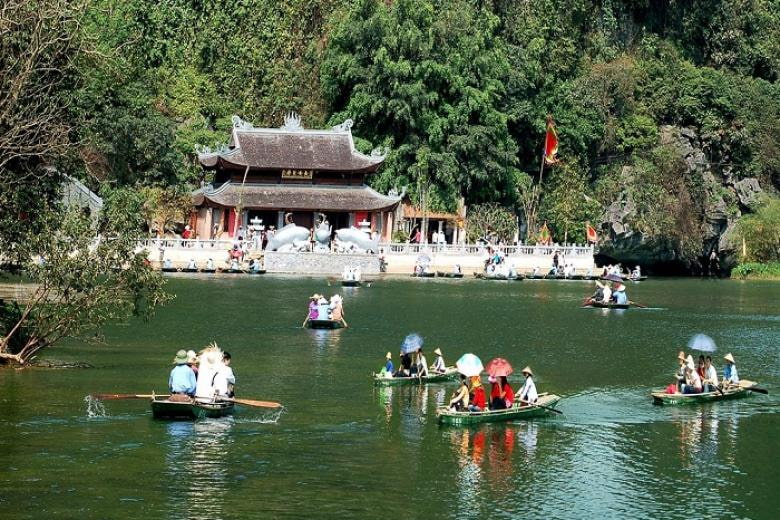
Conclusion – A Spiritual and Scenic Journey to Perfume Pagoda
Key Takeaways for an Enriching Visit
A trip to the Perfume Pagoda offers a unique blend of spiritual exploration and natural beauty, providing a glimpse into Vietnamese culture and Buddhist traditions. For an enriching visit, plan according to your preferences, respect local customs like modest dress and temple etiquette, prepare for some walking with comfortable shoes, and embrace the scenic journey, including the boat trip.
Why the Perfume Pagoda Should Be on Your Vietnam Itinerary
More than just temples, the Perfume Pagoda is a significant cultural and historical site. It offers spiritual immersion by witnessing the devotion of pilgrims at the heart of Vietnamese Buddhism, access to stunning natural landscapes with caves and mountains, and cultural insights into Vietnamese traditions and folklore through a unique travel experience.
Final Tips to Make the Most of Your Experience
To maximize your visit, take your time exploring, engage with locals, and capture memories respectfully. For seamless travel and expert guidance, consider booking with a reputable agency like Threeland Travel. We create personalized itineraries, handling everything from transportation and accommodation to guided tours and cultural experiences, allowing full immersion in the Perfume Pagoda's beauty and spirituality. Committed to responsible travel, we create sustainable and meaningful experiences.
With these tips and a well-planned trip, your visit will undoubtedly be a highlight of your Vietnam journey.










